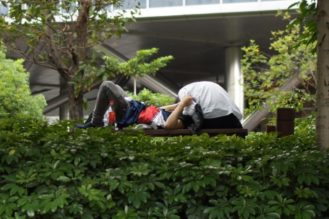The first impression of China was massive awe-inspiring infrastructure and ever present air pollution. The impression remained true during the entire stay in China. Only when we reached the mountains of northern Yunnan, air turned clear and roads started showing signs of negligence and decay. Elevated highways, high speed trains and skyscrapers are all over the country and more are being built. Everything covered with thick hazy smog naturally. Elevated highways are particularly interesting. They seem to be the universal solution to road problems. A congested road, a canyon or a body of water? No problem, just build a highway on top of it. I wonder if three-level highways are on their way. Some naysayers claim that this building frenzy is nothing more than a construction bubble. Whether true or not, all this infrastructure is truly impressive.
Guangzhou was our starting point in China. Situated in the heart of Pearl River Delta, it is the most populated area in China. Indeed, the map of the area looks like one gigantic metropolis with cities seamlessly merging with each other. Guangzhou does not feel crowded or even large, though. The city is rather spread out and decentralised. It is modern and neat, but at the same time rather dull and grey. However, the city gets points for its space submarine like opera house, amazing food and Redtory, a hipster art district. The latter was thin on art, but had a lot of selfie-taking hipsters and expensive cafes. A nice half-day trip nonetheless. Another thing about Guangzhou is that motorbikes are banned in the city and electric scooters are preferred method of transport. Green, fast, quiet on the verge of dangerous and a good example of a vehicle of the future.















